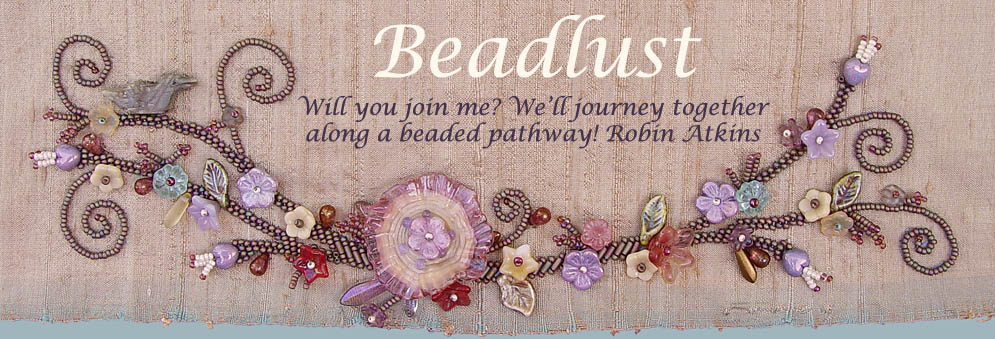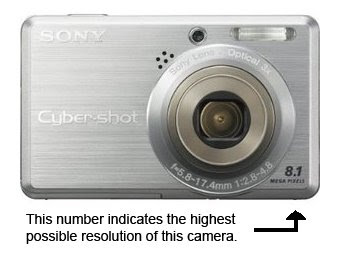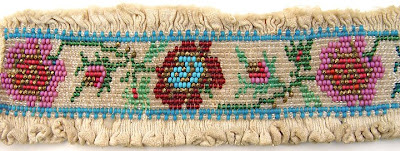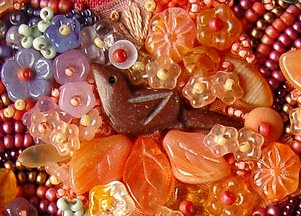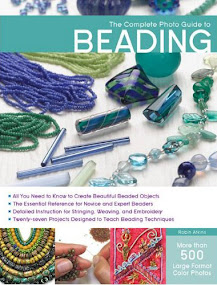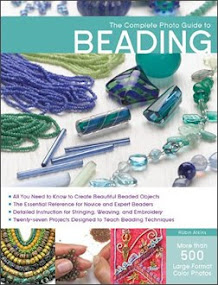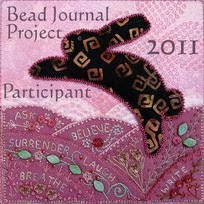
Time line:
- 1985 ~ started making beaded necklaces and buying a few beads
- 1987 ~ joined the Pacific NW Bead Society, a small group of researchers and collectors
- 1988 ~ quit my job and started making my living with beads
- 1990 ~ attended my first international bead conference and discovered my clan
Not in my make up to be much of a joiner or identify myself with any groups. All that changed on October 5th, 1990 when I walked into the Mayflower Hotel in Washington, DC to register for the Second International Bead Conference. As I looked around at the milling group of beaded-necklace-wearing registrants, a warm sense of belonging flooded through me and I remember thinking, THIS is MY CLAN! For the first time, I knew, without a doubt, that I was not alone in my beadlust.
Mostly these folks were collectors and researchers... They wore and craved the really ancient beads, wanted to understand trade routes, wanted to know how and where beads were made. A few like me were also interested in more modern beads, the types now considered vintage, in designing jewelry with beads and in seed beads. Yet, we were there together and strongly felt our clanship.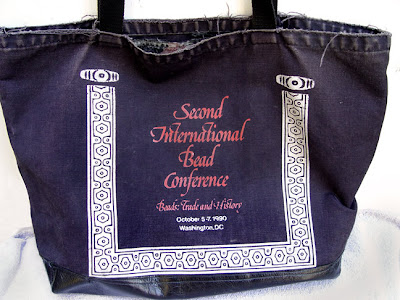
With our registration materials, we received this conference bag, which I immediately adopted as my every-day purse. Being more of an LL Bean type than a Nordstrom girl (not much into fashion trends), I carried this bag around every day since 1990... for 18 years! I added an inside pocket (now frayed) and leather on the bottom (which after a few years had developed significant holes in the corners). But despite my patching efforts, it finally got too shabby-looking even for me to use as a purse. So, with respect for my clan, I am retiring it to grocery tote duties in the future.
In 18 years of using it, I am dependent on its size, strap length and sturdy leather bottom. Nothing I've tried could take its place... Only one solution: make a new, similar bag!
I twisted my sister-in-law, Julie's arm to give me this hand-dyed fabric some time ago. It's not quite upholstery weight and not stiff; it's somewhat textured and feels like cotton. I wanted the inside of my new bag to be a lighter color. So I took Julie's fabric and some batik and machine stitched them into one fabric.
Here's my new bag!

To avoid wear/fray problem at the top of the bag and inside pocket, I bound both with leather (yes, it's real). I also sewed leather to the bottom of the bag to protect the corners and avoid wear.
Funny how difficult it is to let go of the old and worn, even when I have nice and new to replace it. Maybe grocery shopping will be more fun these days....
